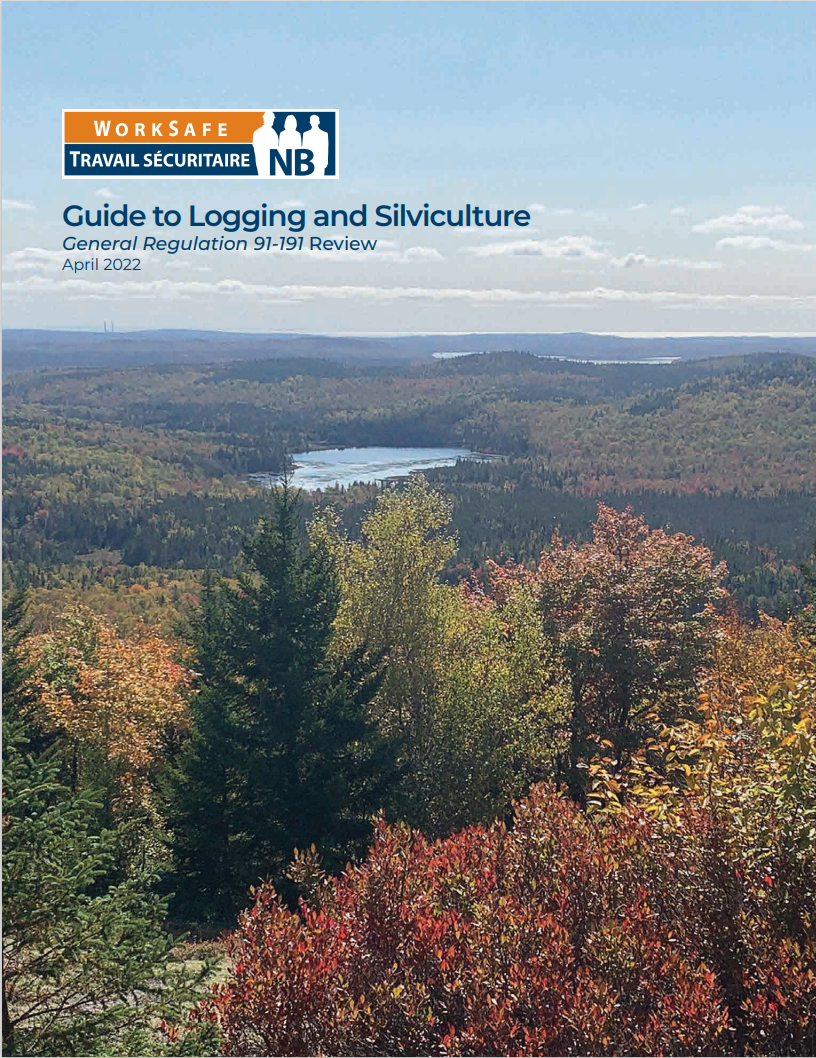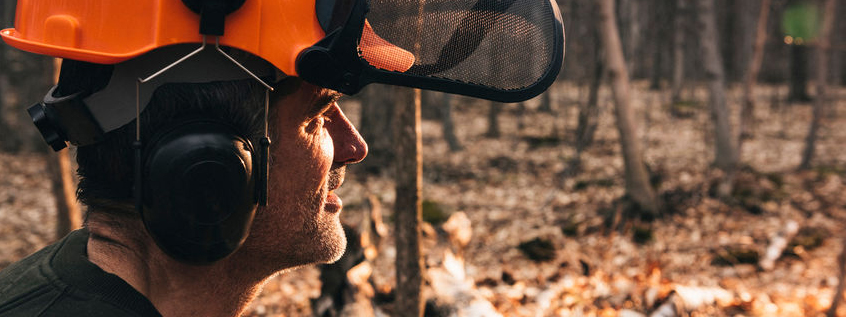

This guide was developed to help employers and employees understand the General Regulation 91-191 (Reg. 91-191) Part XXI Logging and Silviculture Operations including the regulation changes that were implemented April 1, 2022. This guide is for direction, and it is always recommended that employers and employees refer to the regulation or contact WorkSafeNB for more information or clarification.


Taking time in the beginning to learn how to do your job safely will pay off in the long run. Knowing and recognizing hazards that exist, knowing the proper way to perform each task, and establishing an emergency procedure is the best way to avoid injury and mishap.
The most important rule is if you don’t know, ASK!
We’ve outlined some key safety areas that will help you work smarter and safer.
Workers must wear the required PPE according to work hazards, as well as employer and legislative requirements that can include:
Every worksite is required, by law, to stock adequate first aid supplies in a central location and have at least one employee qualified to administer first aid.
Forestry workers allergic to insect bites must carry an EpiPen® or other epinephrine auto-injector kit with them at all times. These should also be included in the first aid kit.
Workers must know how to safely use hazardous products such as gasoline, grease, oil and where the Safety Data Sheets (SDS) are located.
Be aware of the various forestry driving hazards such as road conditions, seasonal conditions, ATVs, off-road and oversized vehicles, animal and vegetation.
Be present. Avoid distractions such as cell phones.
Be prepared:
Be smart on the road:
An operator of a vehicle driving on a woods road must do so with due regard to the speed lmit set by the owner of the woods road, traffic, environmental conditions and road conditions.
Every worker must know and understand environmental risks, symptoms and prevention measures regarding:
Workers need to ensure the operator of any type of forestry equipment has seen and acknowledged their presence – wait for a signal from the operator before moving closer.
Be familiar with the dangers of each piece of powered mobile equipment (pinch points, articulating parts, blind spots, roll over, etc.) and with their operation
It is illegal to allow anyone other than the operator to ride on powered mobile equipment unless a second seatbelt is available.
It is against the law to work at a height three metres or more without fall protection. This includes working on top of loaded trucks or large pieces of forestry equipment.
Before working on a piece of equipment, the machine must be in a zero energy state and locked out. Make sure you know the lock out provisions as they apply to the machinery, tools and equipment you are using.
Equipment must have proper guarding. Never use equipment that has had its guard removed or modified.
Never work under a piece of equipment that has not been blocked. Pieces of equipment that are elevated are usually on soil that can slide or compact, so it is essential that equipment is properly blocked.
An employer must ensure that an employee who operates a chain saw, brush saw or clearing
saw is knowledgeable of the emergency communication procedure and the transportation
procedure set out in New Brunswick Regulation 2004-130 under the Act and is accompanied by a
person who holds a valid workplace first aid certification in accordance with that Regulation. For all other work (mechanical logging for example), a working alone code of practice for the operations will be required. Workers must know and adhere to the established call-in procedure. This usually involves reporting to a designated number at least every two hours, or whenever you leave your piece of powered mobile equipment or vehicle. If you do not call in, the communications centre should try to reach you. If there is no response, help must be dispatched immediately.